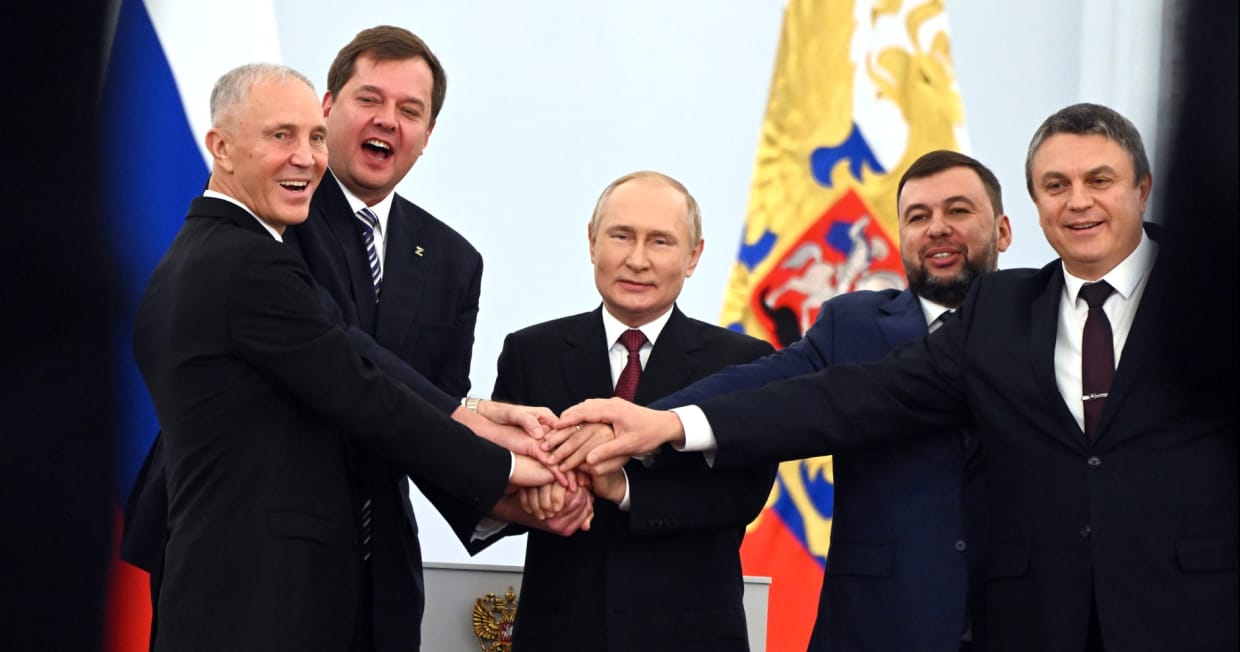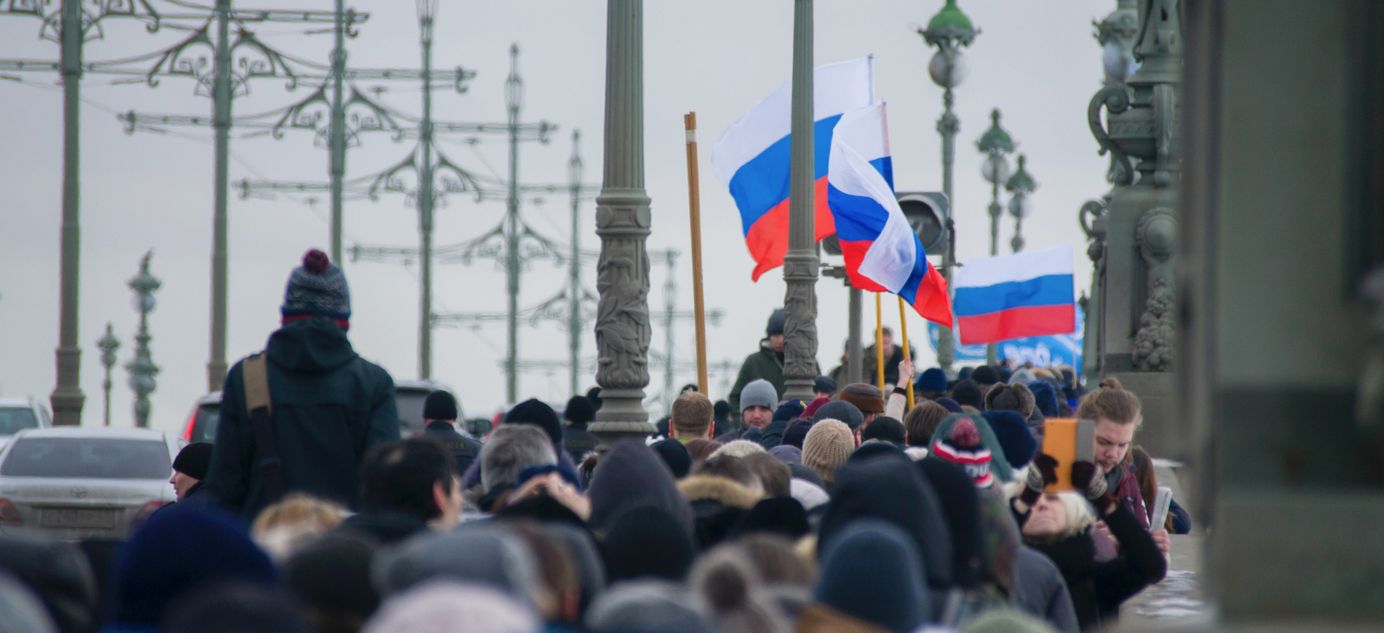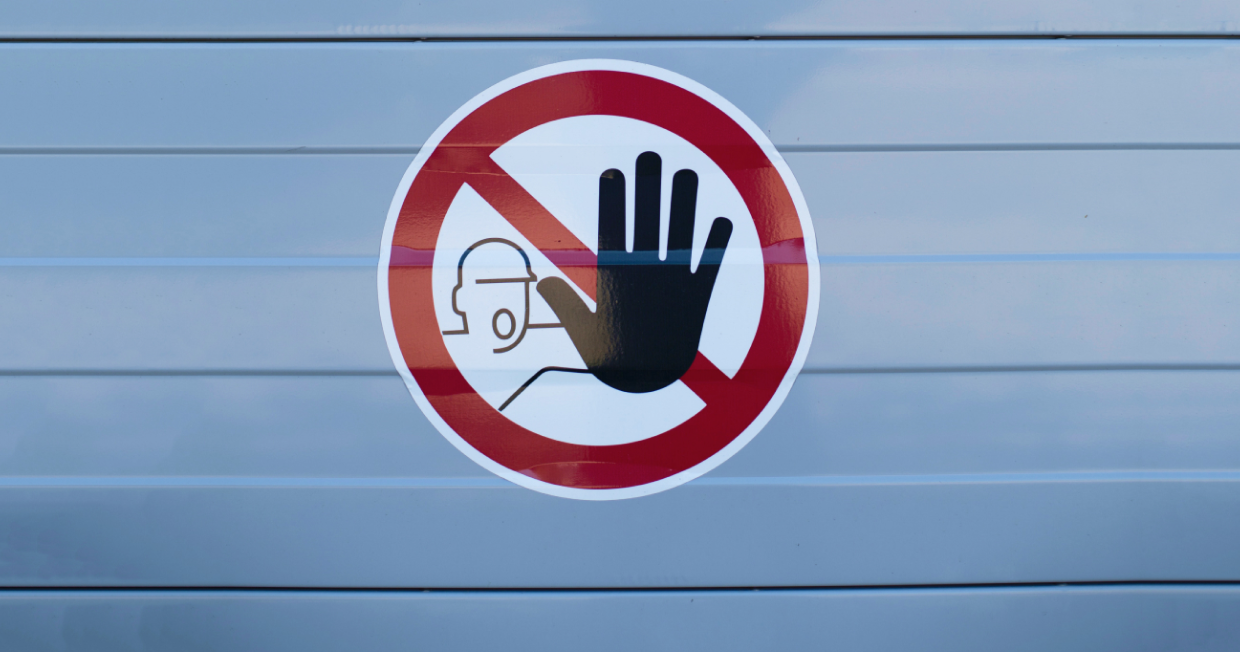
Ceremonial annexation and new losses
Putin formally signed Friday a document allowing the accession of four occupied Ukrainian territories to the Russian Federation. The ceremony took place in the Kremlin’s St George Hall where, eight years earlier, Putin signed the order formalizing the annexation of Crimea. As usual at such events, watching the faces of Russia’s ruling elite as they waited for the perennially delayed president, was illuminating.
Putin gave a 40-minute address, which, despite being hailed as a far-reaching and important speech in state media, simply rehashed things that had been said in previous speeches. Essentially an endless tirade against “Western hegemony,” the speech includeded a long historical digression about the European slave trade, the Opium Wars, the genocide of native Americans and the use of atomic weapons on Japan in 1945.
The mention of Hiroshima (“the U.S. set a precedent,” Putin observed) was the only hint at the possibility that Russia might resort to using its own nuclear arsenal in Ukraine. On this occasion there was no direct threat, appearing to chime with Washington’s assessment and prevailing expert opinions that Moscow is unlikely to escalate the war in such a deadly way.
Putin repeatedly asserted that the residents of the annexed territories would be Russian citizens forever, and that Moscow would never betray them. Neither Putin himself, nor the Kremlin’s propagandists, appeared to be in any way embarrassed by the blatant falsehood of these statements: at the very moment Putin was delivering his speech, Russian forces were preparing to retreat from the strategically significant town of Lyman.
By Saturday morning, the Russian Defense Ministry had announced the withdrawal of its forces from Lyman. The number of casualties and vehicles abandoned during the retreat is unknown. Lyman was the next logical target for the Ukrainian forces following their recapture of the towns of Balakliya and Izyum in the Kharkiv Region. Russian troops defended the important transport hub of Lyman for two weeks, and its fall to Kiev now leaves the northern Luhansk region vulnerable to further attacks. In July, Russian Defense Minister Sergei Shoigu hailed the complete ‘liberation’ of the Luhansk region, an achievement that was the sole Russian military victory of the summer.
By Sunday evening, the frontline had already moved another 30 kilometers east of Lyman, near the town of Kreminna. A further 30 kilometers or so separates Kreminna from Sievierodonetsk and Lysychansk, two major cities in the Luhansk region, which are controlled by Moscow. They will be the next targets for the Ukrainian military. At the same time, Ukrainian troops continued their rapid advance in the south, gaining 25km on Sunday in the Kherson region.



